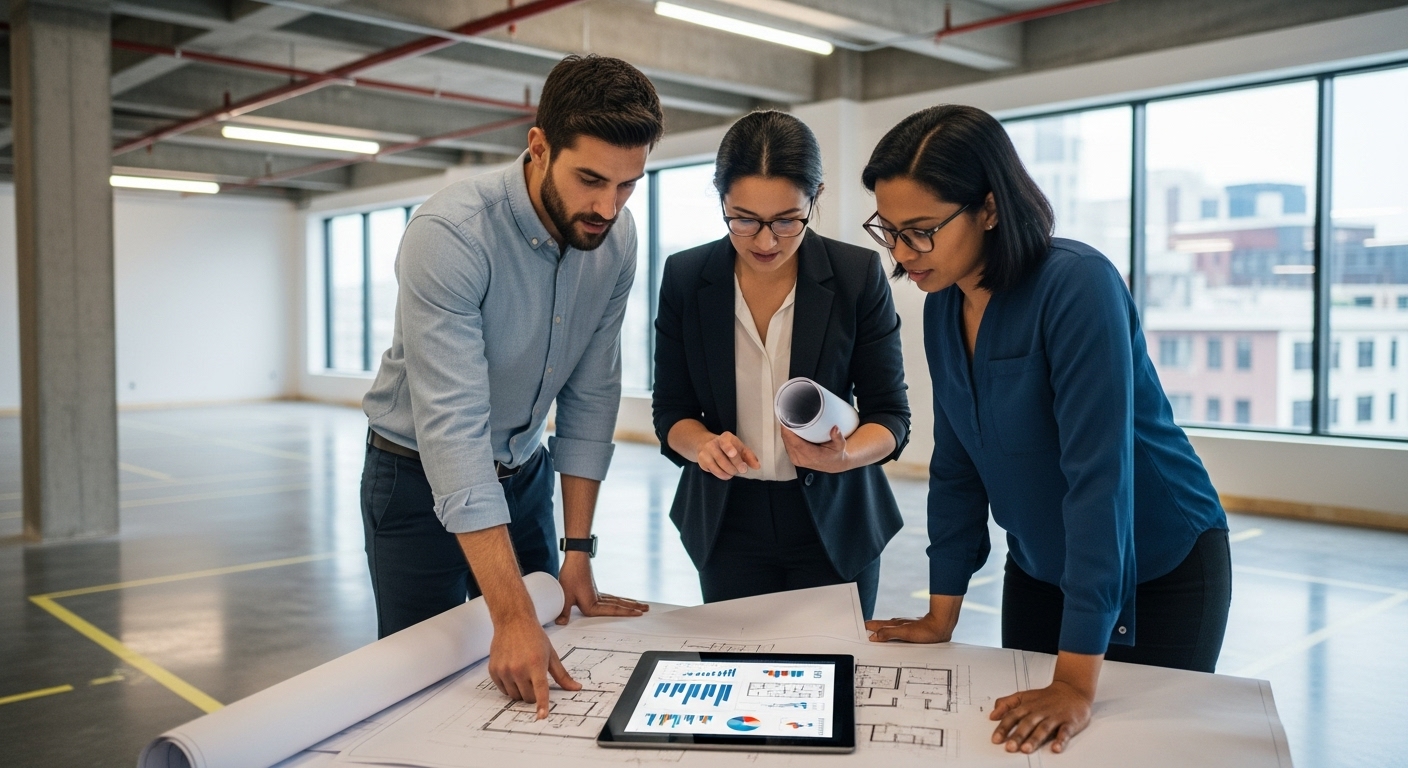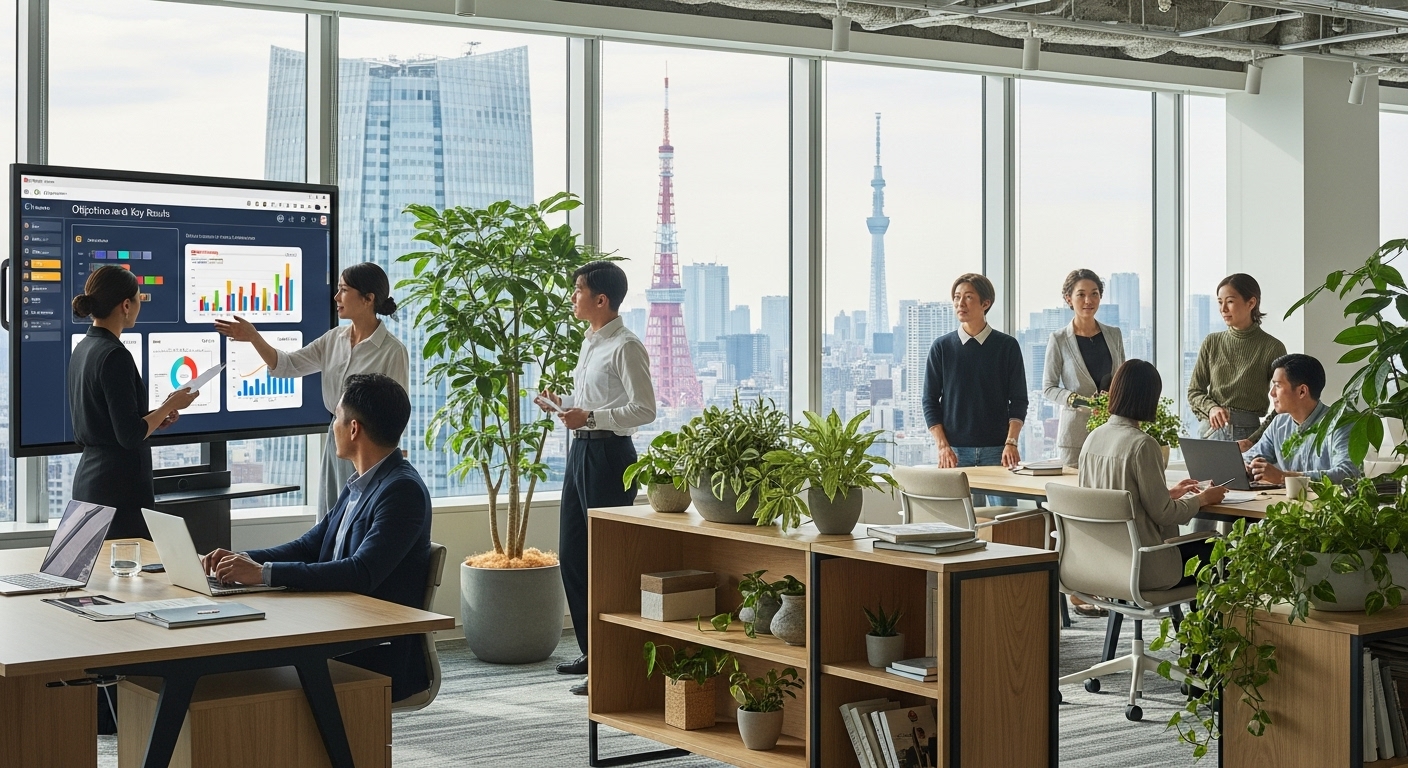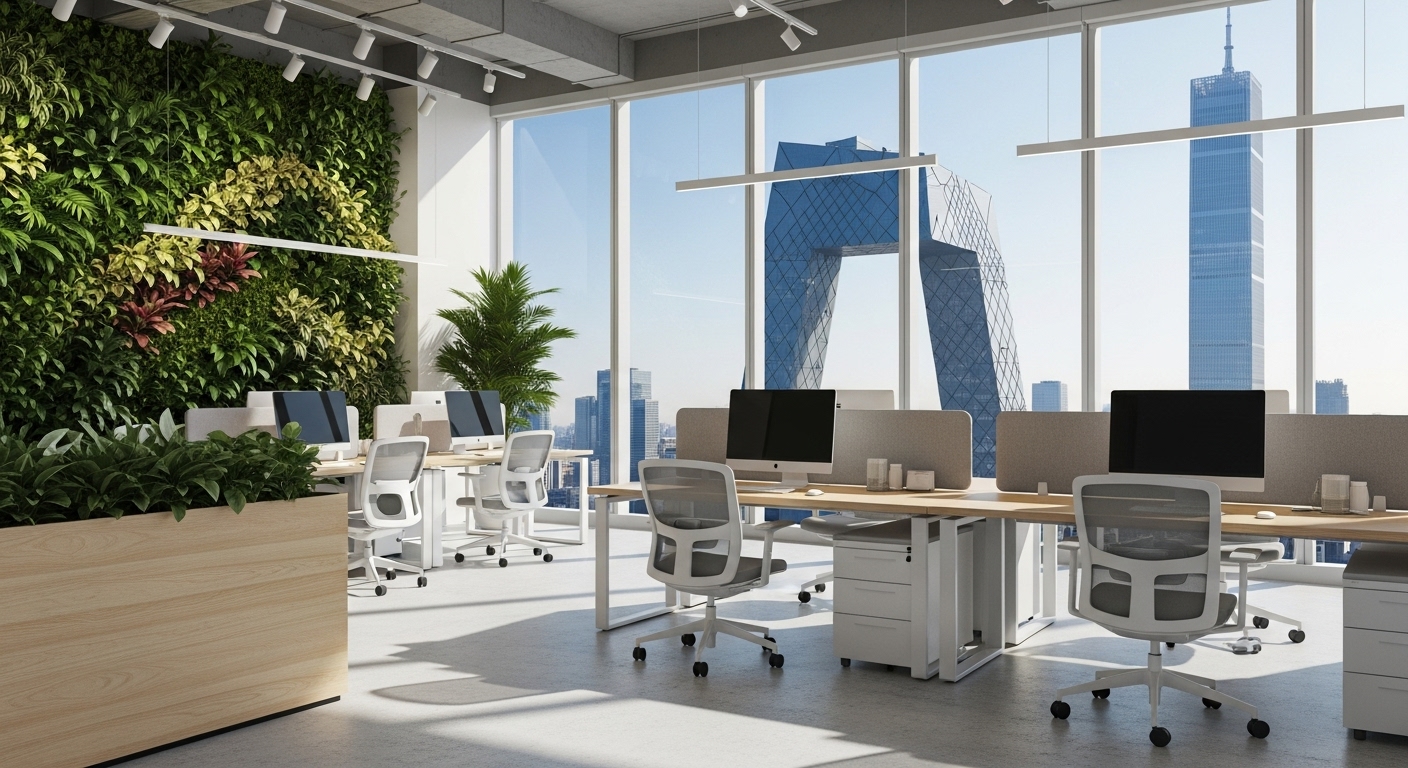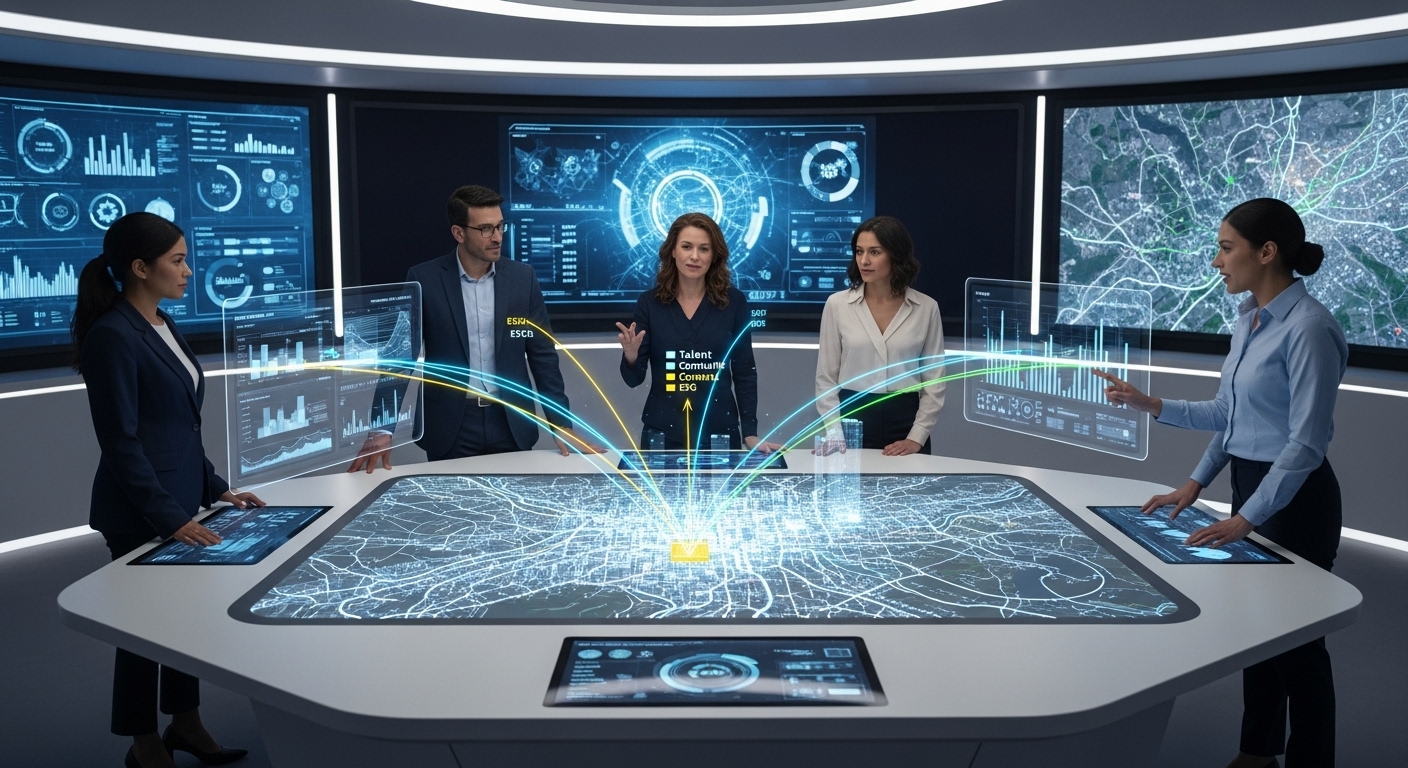Choosing an office used to be a straightforward real estate transaction driven by location and cost per square foot. In today’s hybrid work landscape, it has evolved into a critical strategic decision that impacts everything from talent acquisition and company culture to operational efficiency and brand identity. The pressure is on to find a space that is not just a place to work, but a destination that fosters collaboration, innovation, and employee well-being. A misstep can lead to a costly, underutilized asset that drains resources and disconnects your team. This is why a simple search is no longer enough; a comprehensive audit is required. This post introduces a 7-point strategic workspace audit, a practical checklist designed to guide you through the complexities of the modern office decision. By systematically evaluating your needs, you can ensure your next workspace is a powerful catalyst for growth, not just another line item on the balance sheet.
1. Reassessing your spatial needs in the hybrid era
The first step in any modern workspace audit is to move beyond the traditional metric of one desk per employee. The rise of hybrid work demands a more nuanced approach to space planning. Begin by analyzing actual and projected space utilization. How often do employees come into the office? What types of activities do they perform when they are there? The data might reveal that your greatest need isn’t for rows of individual desks, but for a higher ratio of collaboration zones, project rooms, and high-tech meeting spaces that seamlessly connect in-person and remote team members. This is about right-sizing your footprint for its new purpose. Consider a ‘space-zoning’ strategy: dedicate areas for deep focus (quiet zones, individual pods), collaborative work (team neighborhoods, whiteboarding walls), and social connection (cafes, comfortable lounges). The goal is to create a multi-functional environment that provides the right type of space for the task at hand, making the office a deliberate choice for employees rather than a default location. This reassessment ensures you’re investing in space that actively supports your team’s evolving work patterns, maximizing both utility and employee engagement.
2. Auditing location for talent, clients, and commute
While the mantra ‘location, location, location’ still holds, its meaning has shifted. A prestigious downtown address might be less important than a location optimized for your specific ecosystem of talent and clients. Start by mapping where your current and desired employees live. A location that is easily accessible via multiple modes of public transportation and offers a reasonable commute can be a significant competitive advantage in the war for talent. This concept of ‘commute-worthiness’ is critical; if the journey to the office is stressful and time-consuming, employees will be less inclined to make it. Next, consider client accessibility. If frequent client meetings are a cornerstone of your business, is the location convenient for them? Does it offer the professional amenities, such as parking and impressive meeting facilities, that reinforce your brand? Finally, evaluate the local neighborhood. Access to amenities like quality lunch spots, cafes, gyms, and green spaces can significantly enhance the employee experience, making the office a more attractive destination. An effective location audit balances the needs of your team, the expectations of your clients, and the practicalities of the daily commute to create a central hub that serves all stakeholders.
3. Aligning physical space with company culture and brand
Your office is one of the most powerful, tangible expressions of your company’s culture and brand values. It’s a physical manifesto that communicates what you prioritize before a single word is spoken. An audit of this alignment is crucial. If your culture is built on transparency and open collaboration, a design with glass-walled offices, open communal areas, and visible leadership will reinforce that message. Conversely, if your work requires intense, confidential focus, a layout prioritizing private offices and quiet zones would be more appropriate. Think of your workspace as a storyteller. The choice of materials (sustainable and natural vs. industrial and sleek), color palette, artwork, and furniture all contribute to the narrative. Does your space feel innovative, traditional, playful, or formal? This sensory experience should be a deliberate extension of your brand identity, creating a cohesive experience for both employees and visiting clients. This alignment goes beyond aesthetics; it’s about engineering a space that encourages the specific behaviors and interactions that drive your culture forward, turning your real estate into a strategic asset for cultural reinforcement and talent retention.
4. Evaluating the technology and infrastructure backbone
In the modern hybrid workplace, technology is the central nervous system that keeps everything connected. A workspace audit must include a rigorous evaluation of its technological infrastructure. The absolute non-negotiable is high-speed, reliable, and secure internet with sufficient bandwidth to support video conferencing, cloud applications, and dozens of connected devices simultaneously. But the audit shouldn’t stop there. Evaluate the quality and user-friendliness of built-in AV equipment. Are meeting rooms equipped with large screens, high-definition cameras, and quality audio systems that create an equitable experience for remote participants? Investigate the building’s cellular reception and distributed antenna system (DAS) to ensure seamless mobile connectivity. Furthermore, consider the rise of smart building technology. Features like app-based room booking, smart lighting and climate control, and touchless entry systems not only enhance the employee experience but can also provide valuable data on space utilization, helping you optimize your environment over time. A technologically robust workspace is no longer a luxury; it’s the foundational requirement for productivity and collaboration in a distributed world.
5. Calculating the total cost of occupancy, not just rent
Focusing solely on the base rent per square foot is a common and costly mistake. A true financial audit requires calculating the Total Cost of Occupancy (TCO), which encompasses all expenses associated with the space. This includes the initial capital expenditure for fit-out and furnishing, which can be substantial. It also includes ongoing operational costs like utilities, property taxes, insurance, daily cleaning and maintenance, security, and IT support. These often-overlooked expenses can add 25-50% on top of your base rent. When comparing a traditional lease to a flexible or serviced office, it’s crucial to compare TCO against the all-inclusive monthly fee of the flexible option. While the per-desk price of a flex space might seem higher at first glance, it often includes all the operational costs, providing budget certainty and eliminating the risk of unexpected expenses. A thorough TCO analysis provides a clear, apples-to-apples financial comparison, enabling you to make a decision based on true value and long-term financial impact, rather than a misleading headline rent figure.
6. Analyzing the flexibility and scalability of your lease
Business is more unpredictable than ever, and your real estate strategy must reflect this reality. A critical part of the workspace audit is analyzing the flexibility and scalability offered by your potential lease terms. The traditional 5- or 10-year lease can be a significant liability for a growing or evolving business, locking you into a fixed footprint that may not suit your needs in a few years. Scrutinize the lease agreement for clauses related to subleasing, expansion options, and early termination penalties. Can you easily take on more space in the building if you grow? What are the financial consequences if you need to downsize? This is where flexible workspace solutions offer a compelling alternative. Providers of serviced offices and coworking spaces typically offer shorter-term agreements, from monthly to annually, allowing you to scale your space up or down in line with business demands. This agility minimizes financial risk and allows your workspace strategy to evolve in lockstep with your business strategy. The audit should weigh the potential cost savings of a long-term lease against the invaluable strategic advantage of agility and a scalable real estate portfolio.
7. Prioritizing employee well-being and experience
The final, and increasingly most important, point on the checklist is an audit of the workspace’s impact on employee well-being and the overall workplace experience. Today’s talent expects more than just a desk and a chair; they expect an environment that supports their physical and mental health. This means prioritizing features that were once considered perks but are now essentials. Abundant natural light has been proven to boost mood and productivity. Biophilic design, which incorporates natural elements like plants and wood, can reduce stress. Look for amenities that support a healthy lifestyle, such as secure bike storage, shower facilities, and access to healthy food options. Also, evaluate the space’s ability to foster community and combat the potential isolation of hybrid work. Are there comfortable communal areas, a welcoming cafe, or organized community events that encourage social interaction? A workspace that actively demonstrates a company’s commitment to its employees’ well-being becomes a powerful tool for attracting and retaining top talent. It transforms the office from a place of obligation into a destination that energizes and supports its people.
In conclusion, the process of choosing a workspace has transformed from a simple line-item decision into a complex strategic exercise. The 7-point audit provides a robust framework to navigate this complexity, ensuring your choice is deliberate, data-informed, and future-focused. By moving beyond surface-level considerations of cost and location, and instead deeply analyzing spatial needs, cultural alignment, technological readiness, and employee well-being, you can de-risk your investment. This strategic approach ensures you’re not just leasing square footage, but are investing in a dynamic environment that acts as a catalyst for productivity, a magnet for top talent, and a physical embodiment of your company’s values. Ultimately, the right workspace is no longer just a backdrop for work; it’s an active participant in your company’s success story. Making the right choice requires diligence and strategic foresight, but the return—in the form of a thriving culture and a resilient, engaged team—is immeasurable.





